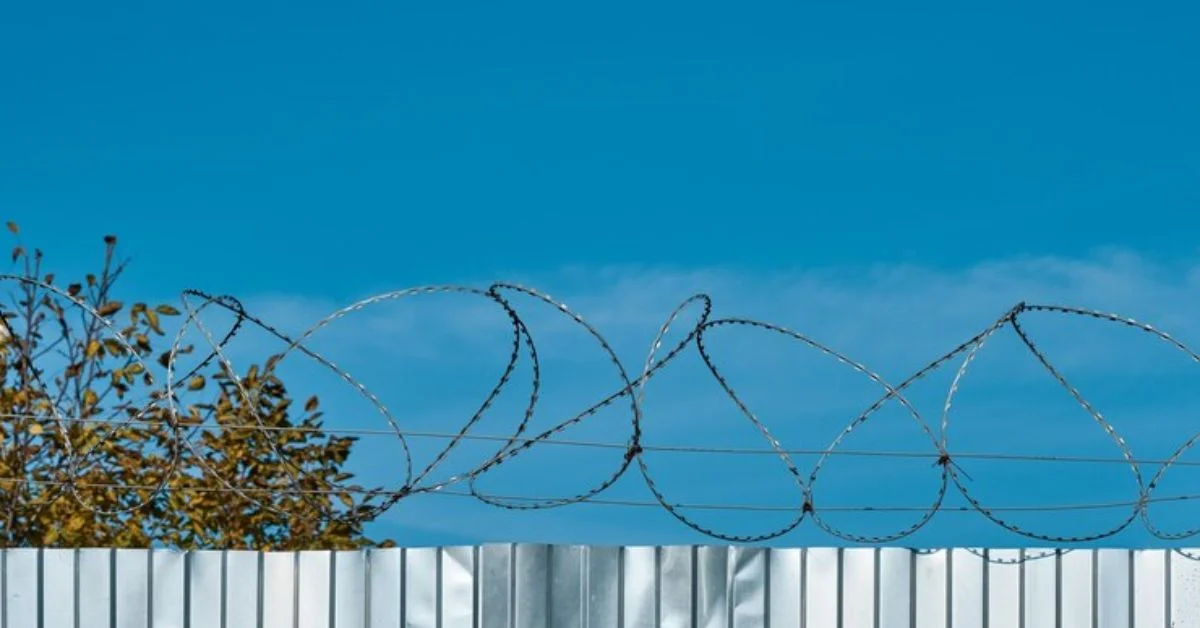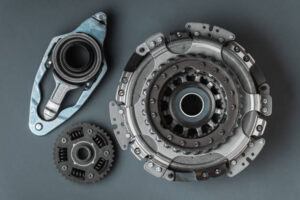In an era of increased emphasis on safety, the demand for robust and reliable security infrastructure is higher than ever. Among the most effective and time-tested solutions is concertina fencing wire—a formidable barrier known for its deterrent effect, ease of deployment, and adaptability across various environments. Whether securing military installations, industrial zones, or residential perimeters, concertina wire offers both physical and psychological protection.
This article will explore everything you need to know about concertina fencing wire—what it is, how it works, where it’s used, how it’s installed, and how it compares with other fencing options. With evolving threats and new technological demands, understanding concertina fencing in its modern context is essential for professionals, property owners, and policymakers alike.
What Is Concertina Fencing Wire
Concertina fencing wire, often referred to simply as “concertina wire,” is a type of barbed or razor wire formed in large coils that can be expanded like a concertina (hence the name). These coils are typically made of galvanized or stainless steel and are fitted with sharp barbs or razor-like edges. The design is both functional and strategic—it’s difficult to climb over, cut through, or dismantle without specialized tools.
First developed for military use during World War I, concertina wire has evolved into a standard security fixture across various sectors. Unlike standard barbed wire, concertina wire is more aggressive in its construction and acts as both a psychological and physical deterrent.
Key Components of Concertina Fencing Wire
A modern concertina fencing system typically includes:
- Core Wire: Provides structural strength. Made of high-tensile steel, this core wire ensures the fencing retains its shape under pressure.
- Razor Tape or Barbs: The external, sharp part of the wire. In razor wire versions, blades are designed to cause injury on contact.
- Clips or Staples: Used to fix coils together and secure the wire to poles, walls, or other structures.
- Support Framework: Posts, brackets, or panels on which the concertina wire is mounted.
The wire is often layered or used in combination with mesh fencing or walls to enhance security effectiveness.
Types of Concertina Fencing Wire
Concertina wire comes in multiple configurations depending on the specific security requirements and terrain. Common types include:
1. Single Coil Concertina Wire
The simplest version. A single strand of concertina wire expanded into a coil and installed along fences or walls. It’s ideal for low-risk areas or when used in conjunction with other barriers.
2. Crossed Concertina Wire
Also known as “double coil” fencing, this version interweaves two coils, creating a more impenetrable structure. It’s often used in prisons, border security, and military bases.
3. Flat Wrap Razor Wire
Flat and compact, it’s used when appearance is a concern or space is limited. Commonly seen in urban environments, atop residential or corporate fences.
4. Helical Razor Wire
This has no connecting clips, giving it a free-flowing coil appearance. It’s less rigid but still provides effective perimeter control.
Each type has unique advantages and is selected based on site-specific needs such as space, visibility, and level of threat.
Applications: Where Is Concertina Wire Used?
1. Military and Border Security
From demilitarized zones to active military compounds, concertina wire is essential for defense-grade security. It delays intrusion and provides time for response forces to act.
2. Industrial Facilities
Factories, warehouses, and power plants often utilize concertina fencing to protect sensitive equipment and deter theft or sabotage.
3. Correctional Facilities
In prisons and detention centers, the wire prevents unauthorized movement both into and out of the facility.
4. Airports and Transportation Hubs
Restricted zones in airports, railways, and ports benefit from concertina fencing to keep critical infrastructure secure.
5. Residential and Commercial Properties
While less common, upscale versions of concertina wire are being used in gated communities, especially in high-risk regions.
Advantages of Using Concertina Fencing Wire
High Deterrent Value
The visual appearance of concertina wire alone can deter potential intruders. Its reputation for inflicting harm discourages tampering.
Quick and Flexible Installation
Unlike permanent walls or electrical systems, concertina wire can be quickly deployed and repositioned as needed.
Cost-Effective
Given its simplicity and low maintenance requirements, concertina wire offers an affordable solution for large perimeters.
Long-Lasting Material
Galvanized or stainless steel variants are corrosion-resistant and suitable for harsh climates.
Compatible With Other Security Systems
Can be used alongside CCTVs, alarm systems, and motion detectors for integrated security.

Installation: How to Set Up Concertina Fencing Wire
Installing concertina wire properly is crucial for its effectiveness and safety. Here’s a step-by-step overview:
- Site Assessment: Identify the areas needing protection, and consider access points and blind spots.
- Mark the Layout: Define the wire’s path, ensuring enough clearance and anchor points.
- Install Support Posts: Metal or concrete posts are spaced at regular intervals (usually 2 to 3 meters apart).
- Mount Brackets: These are angled outward or upward to support the wire coil.
- Unroll the Wire: With safety gear, coils are expanded along the defined route.
- Clip and Secure: Clips are used to attach the coils to each other and the support framework.
- Test and Inspect: Final checks ensure tension, alignment, and stability.
Note: Professional installation is recommended due to safety concerns and local regulations.
Legal and Ethical Considerations
Is it legal to install concertina wire?
In most countries, commercial and industrial zones allow its use. However, local ordinances may restrict the use of concertina wire in residential or public areas due to safety risks to civilians and aesthetics.
Can concertina wire cause legal liability?
Yes. Injuries caused by improperly installed wire can lead to lawsuits or violations. Clear signage and legal compliance are essential to avoid liability.
Environmental and Safety Factors
While concertina wire is designed for security, it must be managed responsibly.
- Wildlife Risks: Can entangle animals if used in rural areas.
- Weather Exposure: Although durable, extreme conditions can weaken clips and corrode poorly coated wires.
- Maintenance Needs: Periodic inspections are required to ensure no breaches or degradation.
Advancements in coated wires and eco-friendly designs are helping reduce these issues.
Future of Concertina Fencing Wire
As security needs evolve, so does the technology behind concertina wire:
- Smart Integration: Concertina fencing is now being integrated with motion sensors and surveillance systems to form “smart fences.”
- Lightweight Alloys: New materials are being developed to reduce weight without compromising strength.
- Anti-Climb Coatings: Enhanced surfaces make scaling even more difficult without increasing injury risks.
- Aesthetic Adaptations: Modern urban installations are being designed to blend with architecture, reducing visual intrusion while maintaining security.
These trends highlight that concertina fencing is not an outdated relic, but a dynamic, evolving component of modern security.
Conclusion: Concertina Fencing Wire
Concertina fencing wire remains one of the most trusted forms of physical security in a world grappling with rising threats and tightening regulations. Its versatility, cost-effectiveness, and powerful deterrent effect make it indispensable across a range of industries. However, its deployment should always be governed by legal compliance, ethical considerations, and an understanding of both its strengths and limitations.
As security continues to evolve, so too will the applications and expectations surrounding concertina wire. Whether for a temporary site barrier or a long-term security solution, concertina fencing wire stands as a symbol of vigilance—quiet, menacing, and always ready.
Frequently Asked Questions (FAQs)
1. What is the difference between concertina wire and barbed wire?
Barbed wire consists of a single or double strand of wire with pointed barbs spaced along its length, while concertina wire is coiled and often features razor-sharp blades, offering higher deterrence and difficulty of breach.
2. Can concertina wire be installed on residential fences?
In some jurisdictions, yes—but it often requires permits. Many urban areas restrict its use in residential neighborhoods due to safety and aesthetic concerns.
3. How long does concertina fencing wire last?
With proper installation and quality materials (e.g., galvanized or stainless steel), concertina wire can last 15–20 years or more with minimal maintenance.
4. Is concertina wire dangerous?
Yes. Its design can cause serious injury. It should always be installed by professionals and accompanied by warning signs to reduce liability and harm.
5. Can I install concertina wire myself?
While possible, it is not recommended unless you have safety training and the proper tools. Mishandling can lead to serious injury.
For more information, click here.









